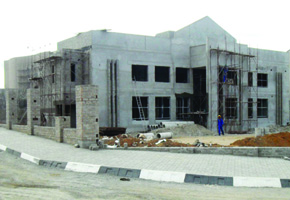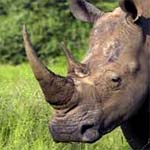Jumbo deaths spell need for fast action

The fire was moving at an estimated speed of 50km per hour and mysteriously cornered and engulfed 20 elephant bulls.
Elephants are normally clever animals and are hardly caught up in such situations.
But the 20 bachelor bulls were subjected to a cruel torture and roasting that sent them to their premature death.
Their eyes got roasted and popped out in the inferno.
Their ears were badly crisped in the fire, destroying their radiator effect.
Their utility trunks were burnt and reduced to stiff useless charred pipes while their skins got badly roasted and peeled off.
Their feet were severely burnt and most of them could only hobble around.
One of the elephants died on the spot, while National Parks and Wildlife Management Authority were forced to kill 19 others after observing that they had been burnt beyond treatable levels.
They were eventually going to succumb to the burns.
With the brittle margins of their ears burnt, the surface area reduced, the jumbos were unable to adequately cool themselves.
The ears are the radiators that fan the body. Imagine a car without a fan!
“We killed the 19 to put them out of their misery. We had to spare them from further suffering after those severe burns. They were burnt to a point where they could no longer help themselves,’’ said Parks director general Mr Vitalis Chadenga.
The fire might have been started by a cigarette stub, or someone clearing land to dig for mice or someone hunting a hare, but it has turned out to be one of the most devastating veld fires recorded in Zimbabwe’s recent history.
In Zimbabwe and indeed, in the history of many parts of the world, it has been unheard of for veld fires to kill huge mammals like elephants.
The question is, where a fire kills 20 huge elephants, what happened to the tortoise, the hares and the tiny little creatures?
What about the vegetation that God never gifted with the art of moving from one place to another?
Disaster struck when the fire reached the ranch, a wildlife reserve near Shangani where, for inexplicable reasons, a herd of 20 elephants was engulfed and burnt up to between 80 and 100 percent disability, albeit the ranch having the most illustrious fireguards and roads.
Ironically, the ranch has 8 000 cattle that intermingle with the elephants but none of the bovines was burnt.
Debshan Ranch is a privately owned farm in Shangani located in the Insiza district and is 45 000 hectares.
A fire occurred on the farm on the August 16 2010 and national parks visit the ranch August 27 2010, after receiving reports of the fire from the Gweru Parks and Wildlife Management Authority office.
An interview ranch manager Mr Collin Edwards said he first spotted the fire in Somabhula area, some 50km away while they were doing their annual aerial census of wildlife on the farm.
“Because of the windy day on August 16, the fire from Somabhula skipped the tarred road and a fire guard and got into Debshan Ranch. It crossed the Bulawayo-Harare highway in the northerly direction.
“It was a hot wild fire that occurred on a windy day. The fire moved at a speed of 35-40 km per hour and 5 meters high.
“The last fire at the ranch occurred in 2001,’’ said Mr Edwards.
According to a parks report, the long time before a fire burnt at the ranch meant that there was a lot of fuel as a result of accumulation of moribund, hence the fire got out of control. When the fire was on Debshan Ranch they tried to back burn with no success.
They did an aerial view of the fire using a helicopter and observed that there were two herds of elephants that were caught in the fire. The herds comprised 25 females and 11 male elephants.
“By nature, elephants are affected by strong smells and in this case the smoke engulfed them.
“The smoke affected their eyesight and irritated their trunks resulting in the elephant eyes bursting and due to resultant reduced visibility, the elephants got burnt.
“One elephant died during the fire while 19 others were killed because elephants use their trunks to feed so if the trunk is damaged there is no way that the elephants will survive,’’ said the report.
Although the elephants are severely burnt, some of them were seen moving around the farm slowly and it has been reported that some of the burnt elephants have been seen out of Debshan Ranch.
From the aerial survey that was done, it was estimated that there are about 300 elephants on Debshan Ranch in addition to other wildlife species.
The main forms of land utilisation at the ranch are wildlife and cattle ranching.
The fire burnt about 3 000 hectares out of a total of 45 000 hectares, which is about 6.7 percent of the total area.
The burnt elephants are 12 percent of the total elephant population estimate at Debshan Ranch.
While through extension and interpretation the issues of fires and fireguards and dangers of fire are being highlighted, there is more that needs to be done.
In addition, to fireguards there is need to educate the people on planned fire management.
This is when rotational fire is done on the range-land to control top hamper which uncontrolled results in accumulation of fuel.
Early burning also needs to be done to control fuel as well, this is whereby a fire is done just after the rains when the grass is still green and this is a cold fire and it is controllable.
Some fires are a result of arson. People start fires when they are disgruntled as a result of lack of benefits from shared natural resources.
The sharing of benefits from natural resources is a bone of contention for many local people because they feel that their natural resources are only benefiting a few people especially in areas where protected areas share boundaries with communities.
Fire has been used by men since time immemorial. Fire is a result of anthropogenic and natural causes. In range-land management a fire can be good fire or bad.
A good fire kills tick-causing diseases, controls moribund and results in germination of seeds that needs fire scarification to open up.
A bad fire results in the loss of human life, loss of livestock and wildlife. Let us educate the nations.





 Oliver Kazunga
Oliver Kazunga 
 Victoria Falls Reporter
Victoria Falls Reporter

Comments